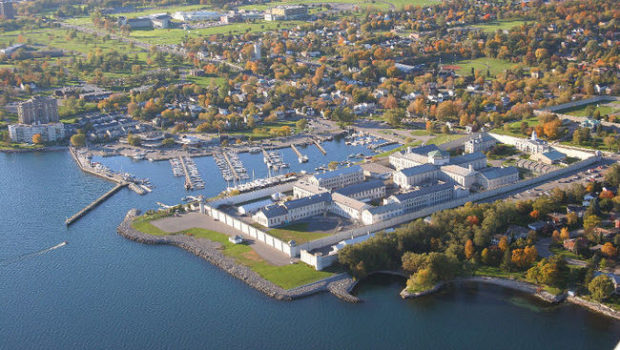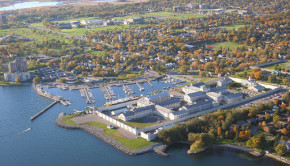From Jailing to Sailing?
Published on December 18th, 2016
Ottawa, ONT (December 18, 2016) – The federal government is being asked to speed up the pace of redevelopment of the land and buildings that once comprised Canada’s most notorious prison to make room for a top-notch sailing school.
A local group has put forward a $300-million redevelopment plan for Kingston Penitentiary that would see the jail along the shores of Lake Ontario turned into an elite training centre for Canadian sailors, alongside a new wind power research institute.
The group, which includes former Olympic sailor John Curtis, former Kingston mayor Harvey Rosen and George Hood, a one-time head of fundraising at Queen’s University, has been working on the idea since the last inmate left Kingston Pen in 2013.
The proposal would open up the facility to the water by tearing down all but the northern wall with the large, heavy, barred doors at the prison’s entrance. Inside the sprawling property would be two museums documenting the jail’s controversial history, as well as new commercial space and condominiums.
The proposal is a limited time offer: Hood said the cash comes off the table come spring if federal and local officials show no interest.
The group isn’t asking for any financial help from federal or municipal coffers. What they are asking is for the federal government to sell them the land — and soon.
“They’re funding projects across the country to try and stimulate the economy,” Hood said in an interview.
“Along we come with an offer to buy a moribund, dormant federal asset, use our money to do it, and it’s not going to cost them a cent and we’re going to create probably 300 jobs.”
Kingston’s current mayor, Bryan Paterson, said other groups have also privately expressed interest to him about redeveloping Kingston Penitentiary and now may feel a little more pressure to advance their own proposals.
Aveley Serin, a spokesperson for Correctional Services Canada, said any bids for the property would have to be justified in relation to its market value. Any sale would have to follow federal guidelines because the jail “demonstrates potential for value enhancement.”
Municipal and federal officials have been consulting with local citizens on a long-term vision for the site to help build consensus around development. Patterson said that process needs to wrap up early next year before any development proposals are approved.
“What is important to me is that not only can we complete the visioning, but that ultimately there is then an interested party that is able to come forward and make that vision a reality,” he said.
“That’s the key. We don’t want a visioning document to sit on a shelf for another 10 or 20 years.”
The federal government officially shut down the prison in 2013 as part of a money-saving exercise, ending the jail’s 178-year run as home to some of the most notorious criminals in Canadian history.
In the intervening years, local groups have hosted tours through the stone buildings inside the ominous walls around the property.
The city and the federal departments that own the prison and the neighbouring harbour are in the midst of consultations to craft a vision for the 20.4-hectare property — about 25 Canadian Football League fields, including the end zones. One-quarter of the area is water in the harbour along the prison’s western wall.
The surrounding Lake Ontario waters, considered one of the best sites internationally for freshwater sailing, hosted sailing events for the 1976 Montreal Olympics.
Source: Jordan Press, The Canadian Press






 We’ll keep your information safe.
We’ll keep your information safe.